Asus ZenBook Duo 14 review: are two laptop screens better than one?
The Asus ZenBook Duo 14 has a key feature that's both a selling point and a drawback
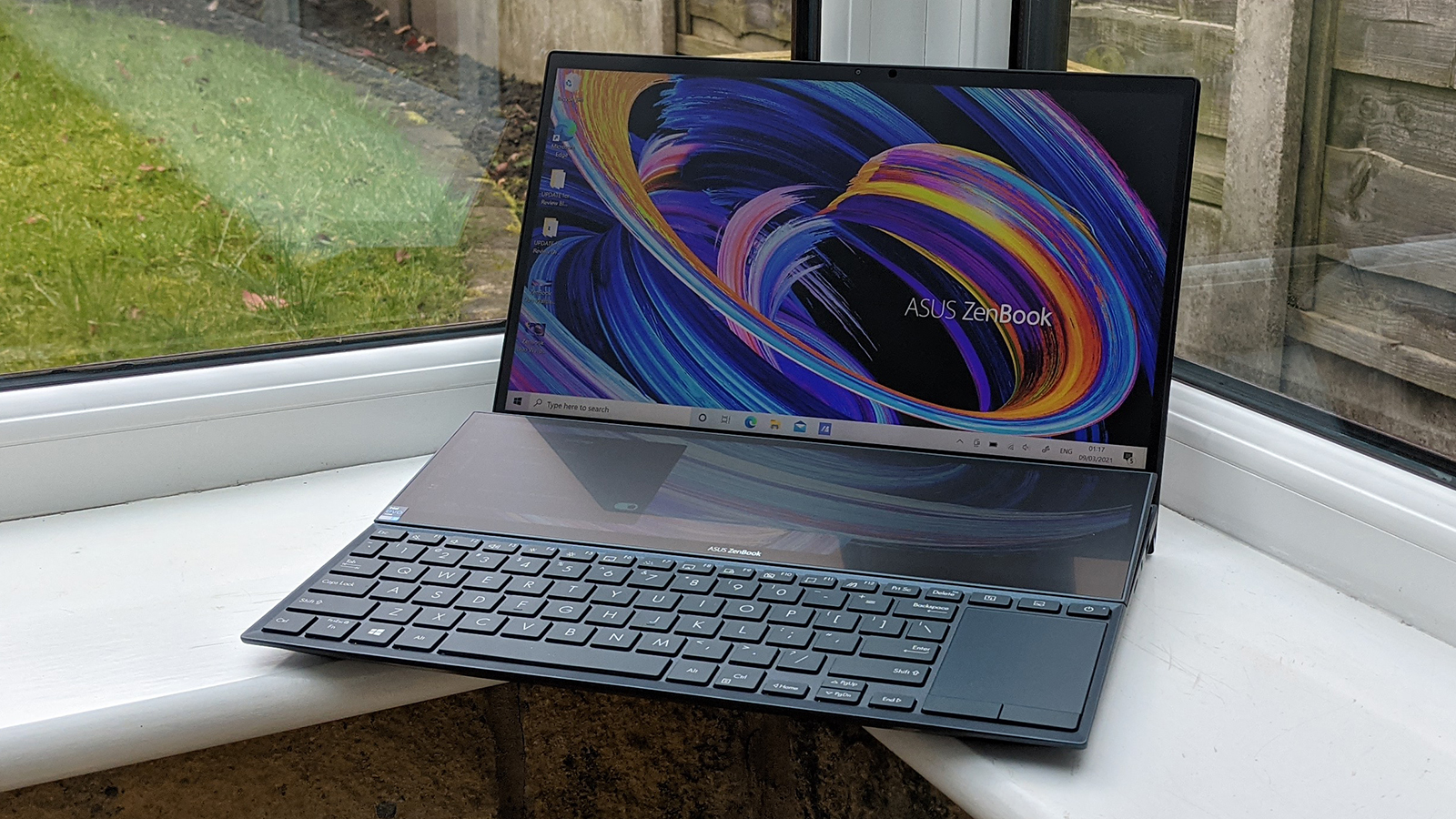
The Asus ZenBook Duo 14 scores highly in a lot of key departments but it is obviously all about that second screen – if you're going to find that display useful then it's a great option for your next laptop, otherwise you'll probably want to look at something else.
-
+
The second screen – if you'll use it
-
+
Great battery life
-
+
Well constructed, thin laptop
-
-
The second screen – if you don't use it
-
-
Weird keyboard arrangement
-
-
Relatively weak graphics performance
Why you can trust T3

The Asus ZenBook Duo 14 for 2021 follows the same dual-screen approach of the Asus ZenBook Duo 14 review: screen and design, only with less of a focus on gaming – and a more affordable price. If you like the design of the Duo laptops, then this gives you a cheaper entry point for them.
And that dual-screen design is really the biggest talking point here: if you don't like the two displays then it's not really going to matter how powerful the laptop is, or how sharp you're going to find the screen, or how long the device can last between battery charges.
Our comprehensive Asus ZenBook Duo 14 explains all you need to know about this unusual laptop and whether it's the right buy for you – from the sort of performance you can expect from the laptop to all the ways you might use that additional display.
Asus ZenBook Duo 14 review: screen and design
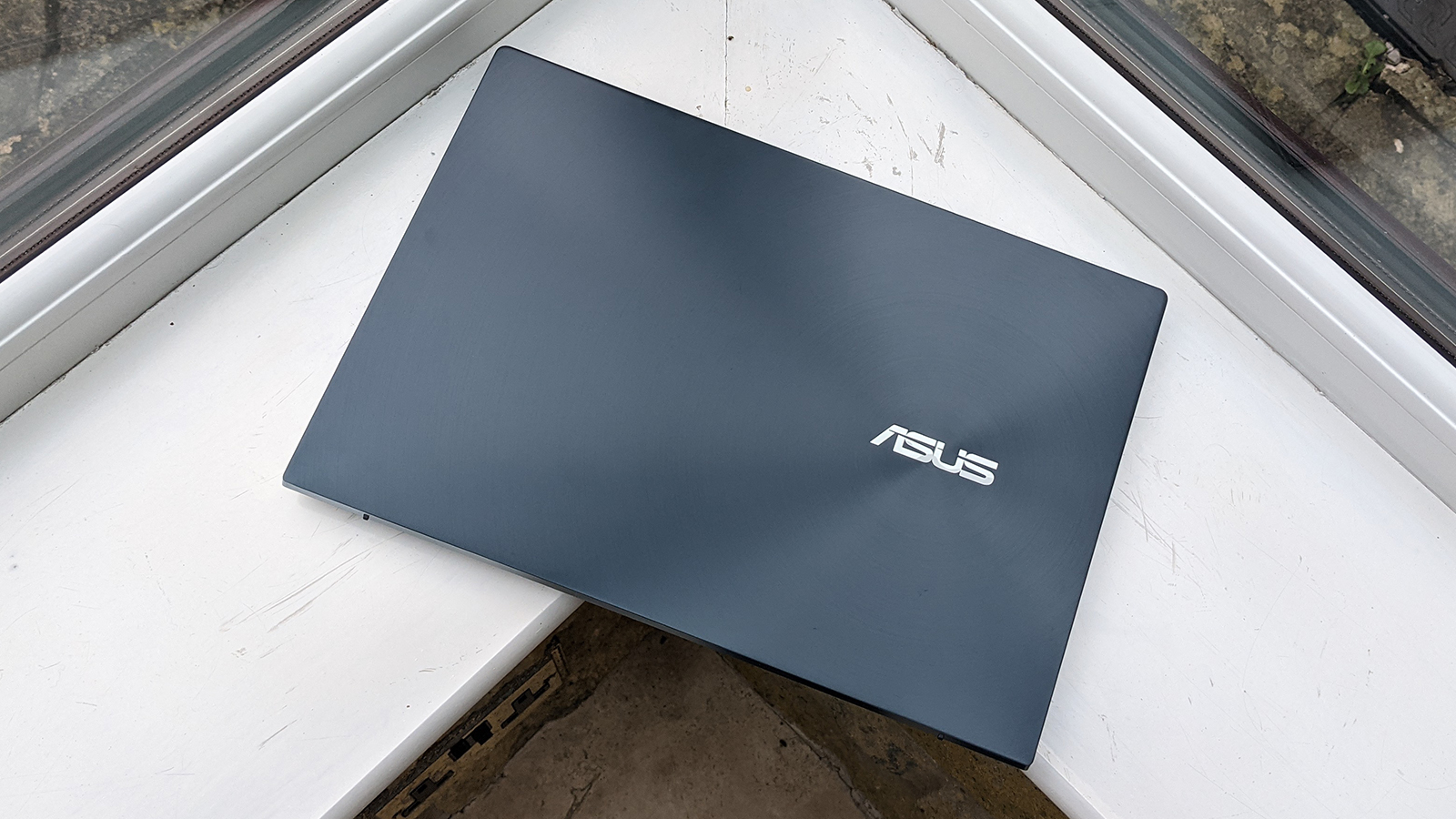
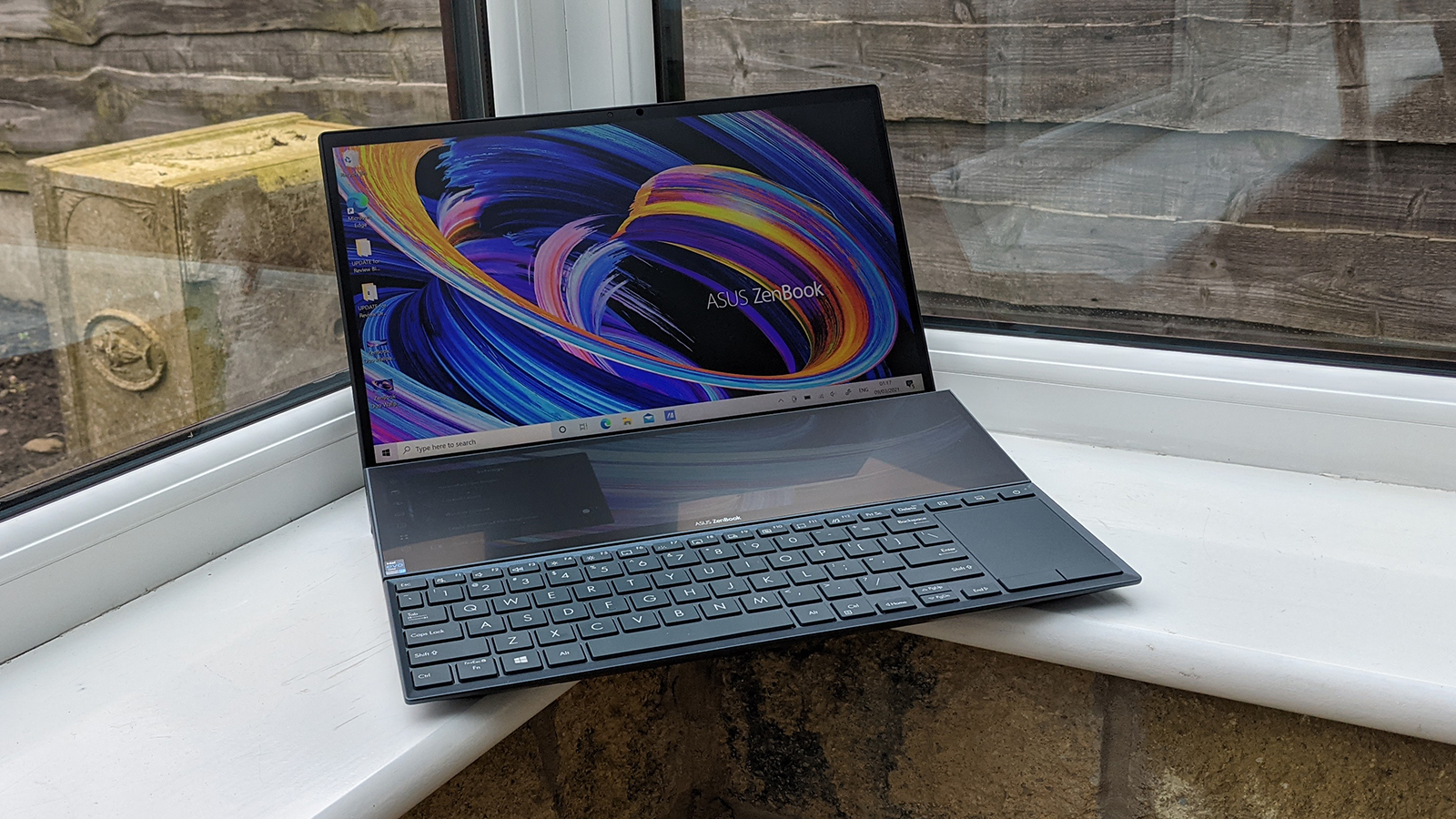
Did we mention that second display yet? The pictures accompanying this review can probably give you a better idea of what we're dealing with here, but between the main 14-inch, 1920 x 1080 pixel touchscreen display and the keyboard, Asus has squeezed in an extra 12.65-inch, 1920 x 515 touch-enabled screen. Windows sees it as a second display, so you can drag any windows and applications you like to it, but Asus sees it as more of a place for quick shortcuts and extra dialog boxes that you don't have room to fit in on the primary display. It's a bit of a dealbreaker as far as this laptop goes, because it could be the only reason you buy this laptop, or it might be the main reason you don't.
You can, for example, keep a chat window open on the second screen while a Zoom call runs in full screen mode on the first screen; or you could have an image editor open on the first display and move some of the toolboxes down to the second display; or you might want to keep a video in view at all times while you're busy on something else; or you could manage Spotify playlists on one screen and everything else on the other one. There are lots of potential uses for the second screen on the ZenBook Duo 14, but to be honest we can't really see ourselves using any of them extensively. With an unusual feature like this, it's fair to say that your mileage may vary.
Asus has been making laptops for a long time now of course, and the ZenBook Duo 14 feels solid and very well built. Even with two displays, the hinge and closing mechanism are robust and reliable, and it's remarkably thin and light considering how much tech is actually packed in here. The magnesium alloy finish adds an extra touch of class, while the display bezels are pleasingly thin (and manage to hide a webcam away too) – we actually prefer taller 16:10 screens on our laptops but the 16:9 widescreen option here is going to serve your widescreen movies much better.
Connection ports are well catered for – two Thunderbolt 4 (USB-C) ports, one USB-A port, a microSD card reader, a HDMI 1.4 out socket, and a 3.5 mm combo audio jack – while we found the typing experience to be soft and responsive, with a textured layer to the keys that definitely feels premium. There's no getting around it though: using the keyboard and cut-down trackpad does feel slightly awkward at first, and at best you're going to find that it takes some getting used to. You might even end up plugging in a separate mouse if you don't adapt quickly to the rather unusual setup.
- The best 2-in-1 laptops, ranked
Asus ZenBook Duo 14 review: performance and features
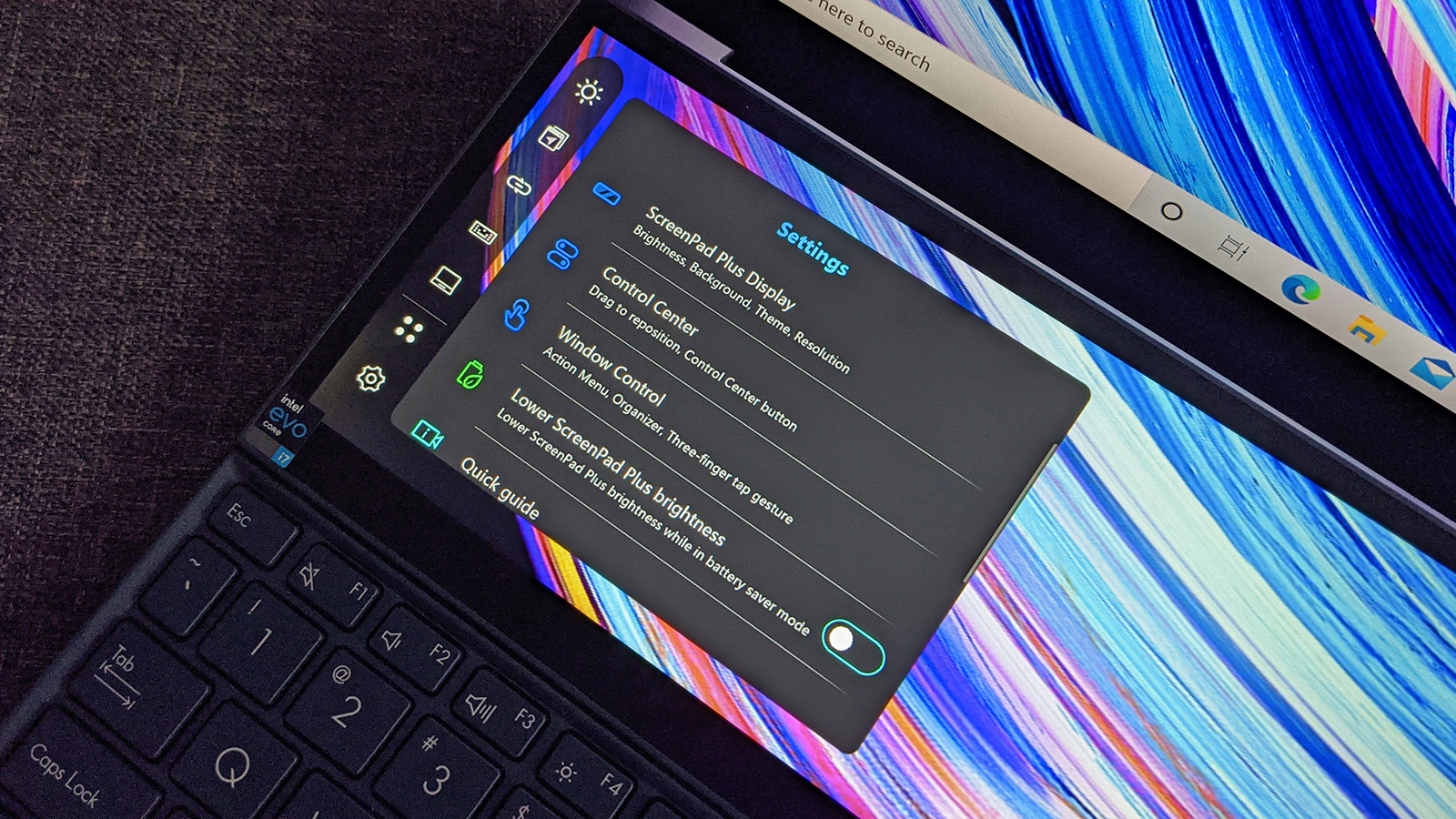
This is a very well-specced laptop: our review unit (the UX482E model) came with an 11th-gen Intel Core i7-1165G7 processor, 32GB of RAM, Intel Iris Xe Graphics and a 1TB SSD. Some variations on that configuration are available – including a discrete Nvidia GeForce MX450 GPU to boost image and video editing, and a less powerful (and cheaper) 11th-gen Intel Core i5-1135G7 CPU – but in terms of the laptop we had, there were absolutely no problems in powering through all kinds of tasks. High-end gaming aside, the ZenBook Duo 14 is going to serve you very well when it comes to performance (and if you are a gamer, other ZenBook Duos are available).
When it comes to dealing with large files, handling multiple browser tabs, and running several demanding applications at once, the laptop doesn't miss a beat. We did notice some heat building up on the bottom of the ZenBook Duo 14, and the fans do kick in more than we'd probably like (though they're relatively quiet), but on the whole most users – gamers and video editors aside – are going to be content with the sort of performance than this dual-screen WIndows 10 laptop offers.
Asus includes a ScreenPad Plus utility for that second screen, which proves reasonably useful: you can deploy it to quickly switch apps between the displays, for example, to set up a panel of shortcuts, or to use a stylus to scribble in text input that then appears in apps and webpage fields on the main display. It's all reasonably impressive, and there's no doubt having an extra screen is useful – we're just not sure that the slim, elongated panel on the ZenBook Duo 14 can fully justify its inclusion.
As for the always-important battery life, general use sees the laptop lasting into double figures in terms of hours (thank you 11th-gen Intel chips). You'll be able to get away with forgetting your charger if you have a day away from the office, even with two displays to run (you can switch that second screen off, if you want to conserve battery life). In our two-hour video streaming test, we maxed up the brightness of the main display, dimmed the brightness of the secondary display, and set the volume low – the dip from 100 percent to 82 percent points to around 10-11 hours of streaming time overall.
- Check out the best laptops on the market
Asus ZenBook Duo 14 review: price and verdict
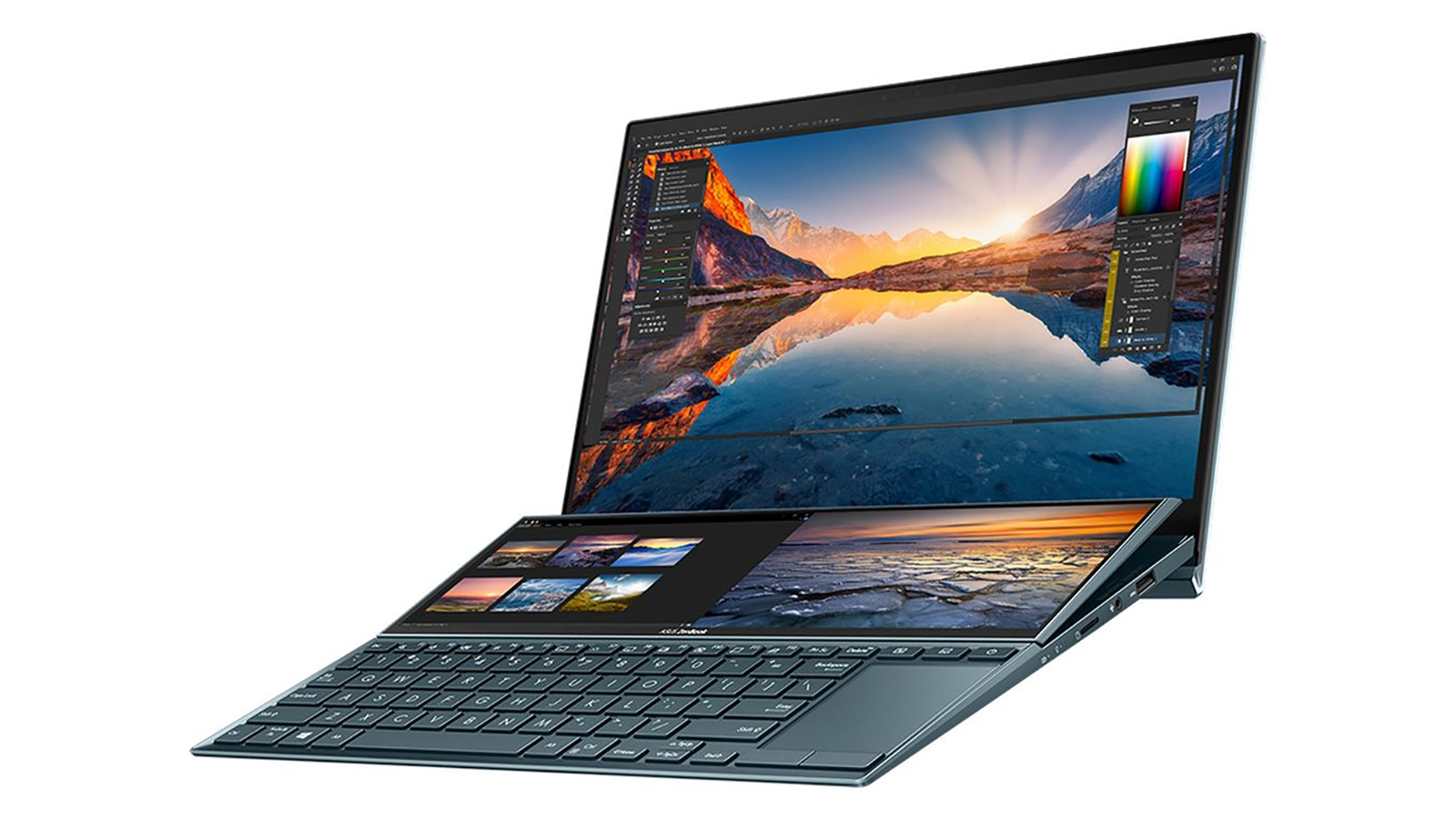
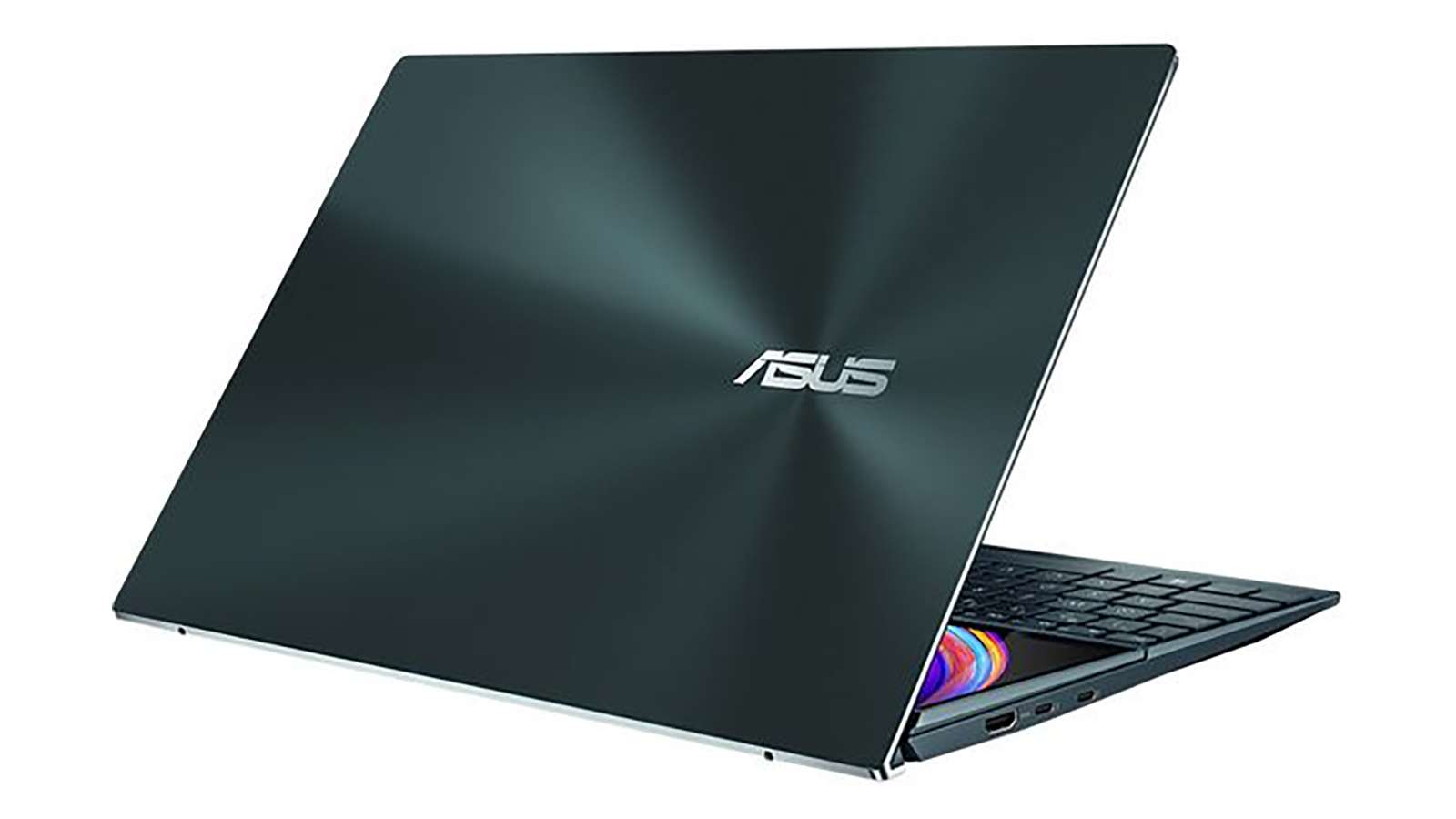
Delivering a definitive verdict on the Asus ZenBook Duo 14 is difficult to do: do you want a laptop with a quirky secondary display for something like Photoshop? Well then this is the clear leader in the field. Do you prefer the standard laptop form factor? Then this device isn't going to interest you at all. Are you unsure whether you want that extra screen or not? In that case, it's complicated... but we suspect that more people are going to find the addition of another display baffling rather than inspiring.
We're actually big fans of having a second screen attached to a computer, as it opens up so many possibilities for multitasking. That's true of this additional display too, but its size and shape somewhat limit what you can do with it – and it means that the keyboard and especially the trackpad are shrunk down and awkwardly positioned. It's not really the sort of laptop you're going to sit back and use on your actual lap because of the way that it's been put together.
Second display aside, the Asus ZenBook Duo 14 is superbly built, very well finished, and definitely at the more stylish end of the spectrum. It packs in some top-notch internal components and offers a very respectable amount of battery life considering it's got two screens to power up. It does get loud occasionally though, and professional creatives are likely to be looking for a display with a higher resolution than this can offer. Gamers, meanwhile, will need more oomph in the GPU department.
There are really no major problems when it comes to the Asus ZenBook Duo 14 other than the compromises caused by the second display – it's both a selling point and a drawback. We'd be happy to use it on a regular basis, and give it a high score in many of the key laptop categories that matter, but before purchasing we'd also recommend thinking long and hard about whether you need that additional display and how you're going to use it. Check the widgets on this page for the latest online deals, but the laptop is competitively priced for what you get in return.
- All the best student laptops are right here
Sign up to the T3 newsletter for smarter living straight to your inbox
Get all the latest news, reviews, deals and buying guides on gorgeous tech, home and active products from the T3 experts
Dave has over 20 years' experience in the tech journalism industry, covering hardware and software across mobile, computing, smart home, home entertainment, wearables, gaming and the web – you can find his writing online, in print, and even in the occasional scientific paper, across major tech titles like T3, TechRadar, Gizmodo and Wired. Outside of work, he enjoys long walks in the countryside, skiing down mountains, watching football matches (as long as his team is winning) and keeping up with the latest movies.
-
 Polar’s new subscription feature lands in the shadow of Garmin’s Connect+ rollout
Polar’s new subscription feature lands in the shadow of Garmin’s Connect+ rolloutPR genius or timing disaster? Polar’s new Fitness Programme adds adaptive training to its ecosystem
By Matt Kollat Published
-
 New Orient Star watches offer a glimpse of the magic within
New Orient Star watches offer a glimpse of the magic withinThere are two new skeleton pieces
By Sam Cross Published
-
 Netflix's most surprising 100%-rated sci-fi series returns with gorgeous trailer
Netflix's most surprising 100%-rated sci-fi series returns with gorgeous trailerLove Death + Robots is back for more
By Max Freeman-Mills Published